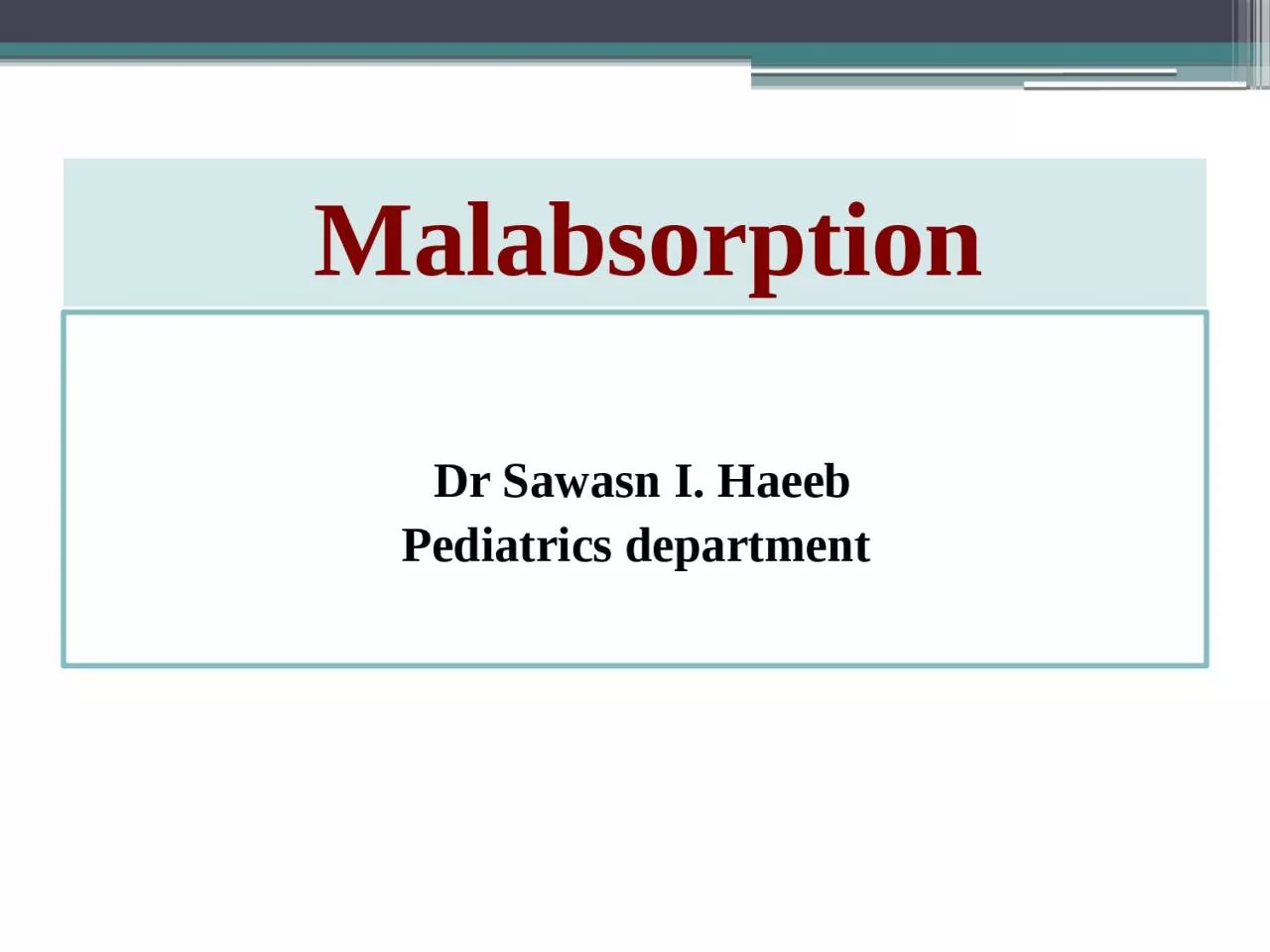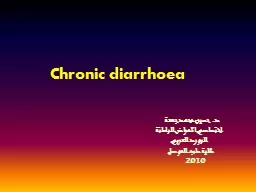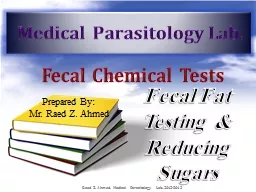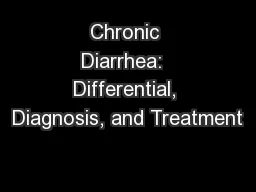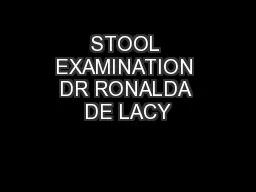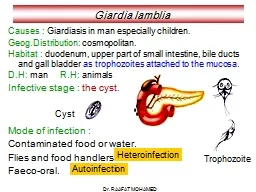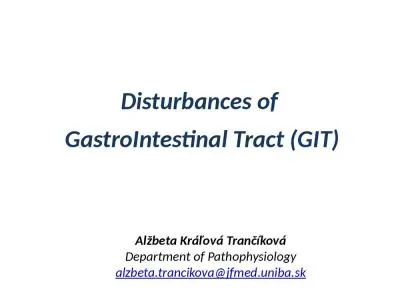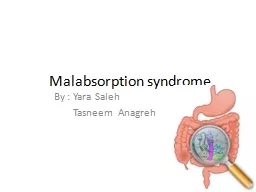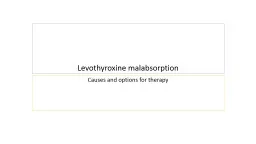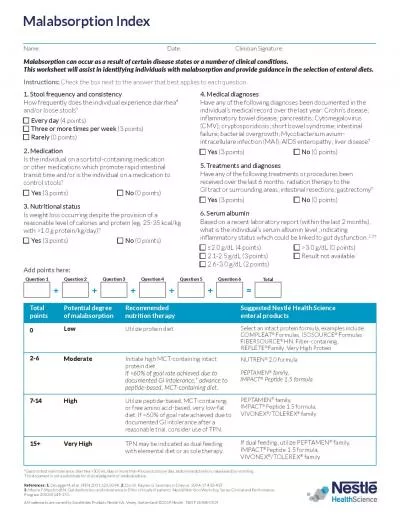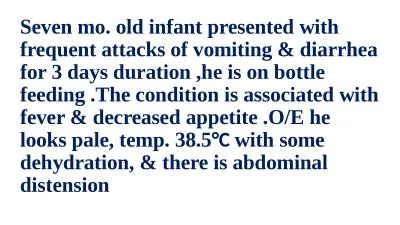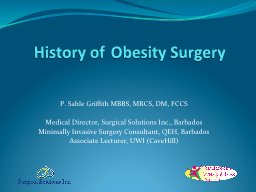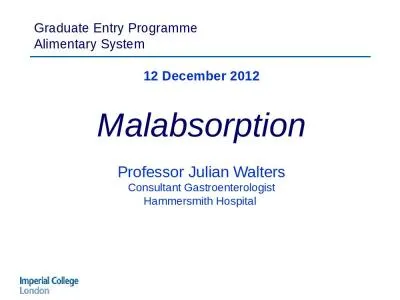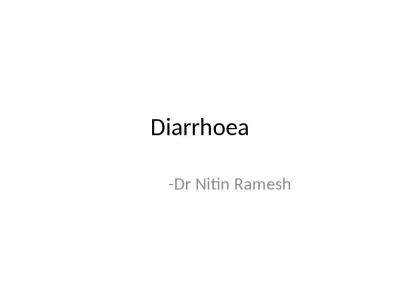PPT-Malabsorption Dr Sawasn
Author : BabyDolly | Published Date : 2022-08-02
I Haeeb Pediatrics department Case study Twelve years old girl presents to the physicians office with three years history of intermittent diarrhea with loose
Presentation Embed Code
Download Presentation
Download Presentation The PPT/PDF document "Malabsorption Dr Sawasn" is the property of its rightful owner. Permission is granted to download and print the materials on this website for personal, non-commercial use only, and to display it on your personal computer provided you do not modify the materials and that you retain all copyright notices contained in the materials. By downloading content from our website, you accept the terms of this agreement.
Malabsorption Dr Sawasn: Transcript
Download Rules Of Document
"Malabsorption Dr Sawasn"The content belongs to its owner. You may download and print it for personal use, without modification, and keep all copyright notices. By downloading, you agree to these terms.
Related Documents

